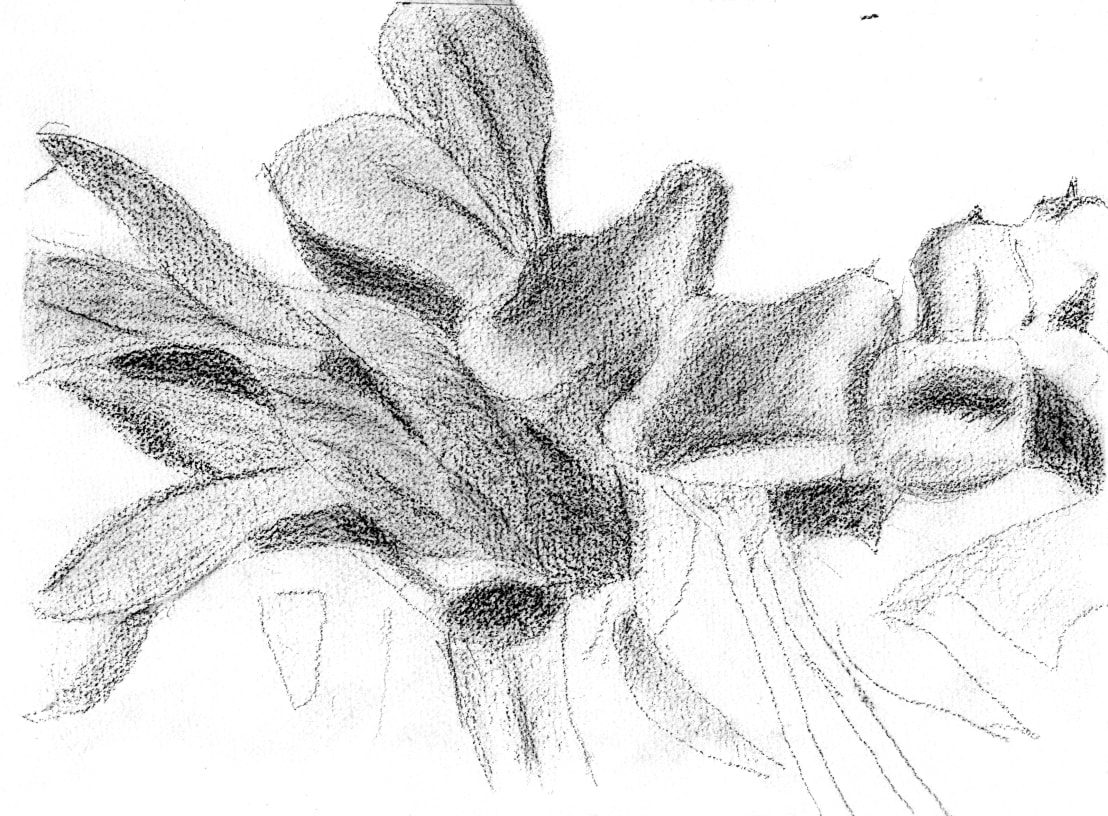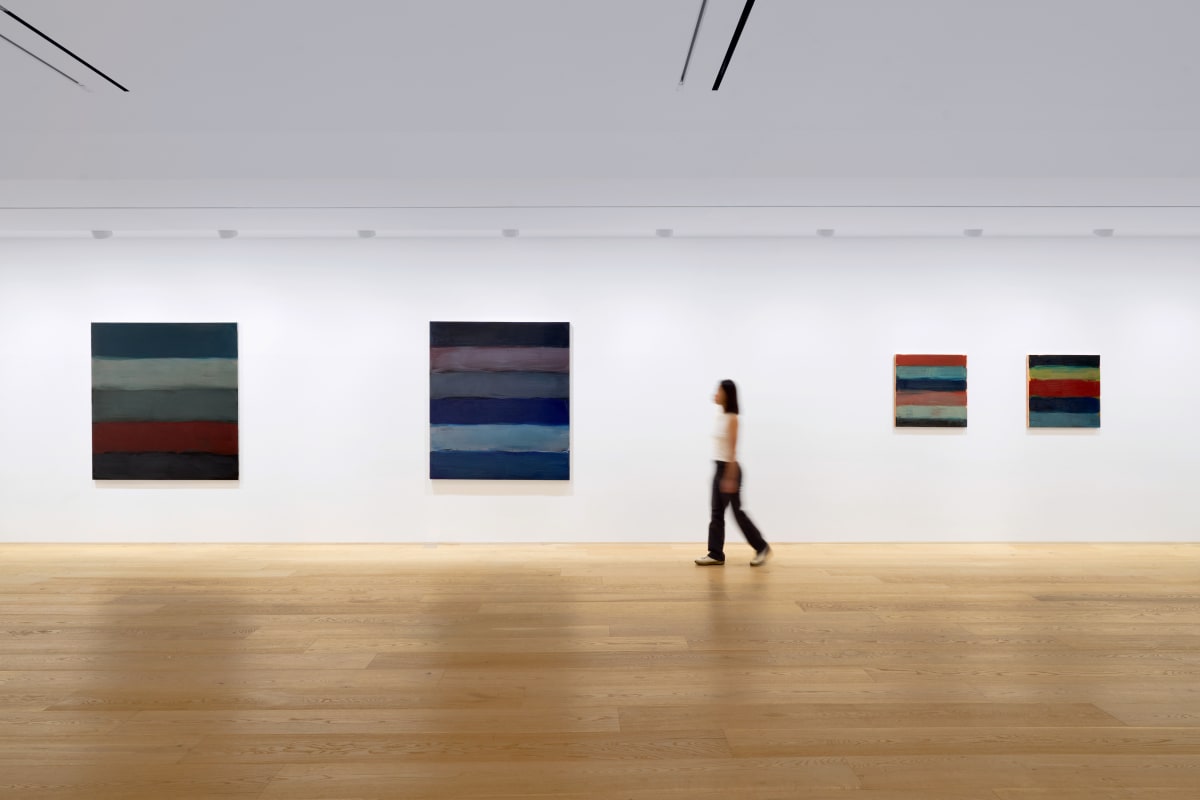Antony Gormley ‘I’ve got a sixth of my life left. I don’t want to waste it’
By Kirsty Lang
At 73, the sculptor unveils his stately home takeover — and talks about the pain and privilege of success
Antony Gormley is obsessed with the passage of time. Many of his works contain the word “time” in the title. His army of silent, featureless iron figures interrogate time and the relationship between humans, geology and nature over the course of our planet’s history. The artist is also listening to the clock ticking on his own lifetime, he says when we meet at his London studios. At 73 he is filled with a sense of urgency. Does he feel, like David Hockney, that he must be even more productive as he gets older because time is running out? “Yes,” he replies, leaning forward and nodding vigorously. “I feel that very, very strongly. I’ve got maybe a fifth or a sixth of my life left to live and I don’t want to waste it. Time is the most precious, fugitive material.”
He works in a space just north of King’s Cross, north London. From the outside it looks like a small factory, and there’s a constant hum of drilling and banging. Gormley’s office is up an iron staircase above one of the workshops. As he greets me I’m struck by how youthful he looks. He’s 6ft 4in and lean, with a healthy glow on his cheeks; I can well imagine him still producing art in his nineties. Gormley’s body shape is familiar to anyone who has seen his work because the artist has been using it for over 40 years as a mould for his sculptures, and he doesn’t appear to have altered in that time. There’s no sign of any spread round the waist or a stoop to the shoulders.
Not since Henry Moore or Barbara Hepworth has a sculptor connected with the British public on such a scale. His sculptures can be found in public spaces all over the country, from Plymouth to Margate, Merseyside to Leith. Every new show is an event. One hundred of Gormley’s life-sized figures have taken up residence in the house and gardens of Houghton Hall, a Georgian stately home in Norfolk, just down the road from the Prince and Princess of Wales’s country retreat on the Sandringham estate. Back in his studio, the artist brings up images and a map of the grounds on his computer screen to show me how and where the figures have been placed. Spread over 300 acres, some are buried up to their waist or neck, while others stand on the ground or above it on a plinth. Gormley estimates that it will take the average visitor two to three hours to walk around the entire work.
The photographs taken on a misty February morning reveal an army of silent men, frozen in time, surveying the manicured landscape of an English Versailles. There is something almost judgmental about them. Are they everymen questioning the privilege of their surroundings? “By implication, yes,” Gormley says. “In this ever more divided world, between rich and poor, between the 1 per cent and the rest, where does justice come in?”
I ask whether the contemporary art world is a reflection of those huge divisions in wealth he’s referring to, thinking about the 1 per cent who travel round the world to art fairs in Basel, Hong Kong and Miami and spend half a million pounds or more on a single Gormley figure. “Yes, and that’s a responsibility I must take. I’m immensely grateful to people who are keen enough to collect my work, but in my view that puts a responsibility on me to make works that are more accessible, in collective spaces.”
[...]
Place and setting is critical to Gormley’s work. His new show at Houghton Hall is a case in point. He clicks on a photograph of a sculpture half-buried in the floor of the entrance hall of the property, which is home to David and Rose, the Marquess and Marchioness of Cholmondeley. It was the first work to go in, the baseline from which all the other figures take their position. The idea is to create a single horizontal plane across the landscape and the geological processes that shaped it. I express surprise that the Cholmondeleys allowed him to drill a hole in their hall floor. He nods. “David and Rose are very committed to this. They even agreed to leave their front and back doors open during the exhibition so you can look straight through.”
The name of the work at Houghton Hall is Time Horizon. Gormley thinks of his army of iron men as industrially made fossils representing a period in time. As visitors wander across the lawns, through the woods and walled gardens, he hopes they will reflect on the impermanence of humans on this planet and the imprint our species has left. “The whole of Britain is a garden, a living landscape painting of the nature we would like to live in.”
Time Horizon was originally commissioned in 2006 for an archaeological site in southern Italy. The manufacture of the 100 iron sculptures — which are moulded from the artist’s body — was paid for by the taxpayers of Catanzaro province. The irony of European money funding an artwork in the UK is not lost on Gormley, a passionate Remainer. Thanks to his mother, he has a German passport and sees himself as a European artist. “There is a German idealistic philosophical tradition that I’ve been formed by, and Germany has been very generous in its support of me.” His work Another Place, comprising 100 cast iron sculptures of his body planted in the sand on Crosby Beach in Merseyside, was a German commission. The fabrication was paid for by the taxpayers of Schleswig-Holstein. Critical Mass II, which went on display at the Royal Academy in London, was funded by Austrian money.
“Brexit was the biggest act of self-harm this country has ever played on itself, and what a betrayal. It [the EU] is a creative, collective project which found a way of putting Europe back together after two devastating world wars. And I think of all the things we have lost, from Erasmus scholarships to all those musicians and artists who can no longer travel freely between Britain and Europe.”
Given that he uses industrial processes and engineering to make his art, is it hard to find assistants with the right skills? “Yes. There used to be foundries in most cities in this land, but now there are fewer and fewer. We had to take over our foundry in Hexham because it was going to shut down. It couldn’t compete with Russia, China and India.” There were 23 employees when he bought the foundry; seven of them stayed on and were combined with seven people who had trained at art school. “The cross-fertilisation has been extraordinary. Nobody had asked any of these workers how they might do things differently or better. It’s been a brilliant experience.”
Gormley thinks the collapse of arts education in this country is “tragic”. “There has been something like a 40 per cent reduction in people wanting to study art history or archaeology or art at secondary level. If we are not renewing the sources of creativity — be it singing, playing an instrument, dancing, it doesn’t matter what — how can we bring new forms into the world? We are all going to become slaves of AI; managers of late capitalism. We wouldn’t have got the Beatles without Liverpool College of Art.”
When Gormley was 11, Father Ambrose from Ampleforth gave him a lump of wood and some tools and showed him how to make a bench. He still has it. “It was an unbelievable gift. It gave me agency and made me realise I could contribute to this world, and I think that’s what art rooms can provide in schools.” He also credits his father with taking him to the National Gallery and the British Museum as a small child. Appearing recently on the podcast The Rest Is Politics, he told the hosts, Alastair Campbell, the former Labour spin doctor, and Rory Stewart, the former Conservative MP, how, aged six or seven, he would gaze up in wonder at huge statues from the ancient world. It lit a creative spark in him that continues to burn.
“We are unbelievably lucky that our museums are free. We lead the world in this, but we must fight to keep this.” Given that we are likely to have a new government by the end of this year, what would he like them to do? First of all, he says, art must no longer be sidelined in schools. “Politicians come and go, but what defines our hopes, fears and values is the art we produce. That will be remembered long after we’re all gone.”
Time Horizon is at Houghton Hall, Norfolk, Apr 21-Oct 31


















































































































































































